
The silver-washed fritillary is a common and variable butterfly found over much of the Palearctic realm – Algeria, Europe and across the Palearctic to Japan.

The brown hairstreak is a butterfly in the family Lycaenidae. The range includes most of the Palaearctic.

The dark green fritillary is a species of butterfly in the family Nymphalidae. The insect has a wide range in the Palearctic realm - Europe, Morocco, Iran, Siberia, Central Asia, China, Korea, and Japan.

Parnassius stubbendorfi is a high-altitude butterfly found in from the Altai Mountains across central, south, and far east Siberia, Sakhalin and the Kuril Islands and from Mongolia across north China to west Korea and Japan (Hokkaido). It is a member of the snow Apollo genus (Parnassius) of the swallowtail family (Papilionidae).

Parnassius felderi, the Felder's Apollo, is a high-altitude butterfly which is found in Amur, Ussuri and China, North Korea and Japan. It is a member of the snow Apollo genus (Parnassius) of the swallowtail family, (Papilionidae).

Catocala electa, the rosy underwing, is a moth of the family Erebidae. The species was first described by Karl Friedrich Vieweg in 1790. It can be found in Europe and Asia.

Argynnis laodice, Pallas' fritillary, is a butterfly of the family Nymphalidae. It occurs in damp forested places in southern Scandinavia, Eastern Europe, northwestern Kazakhstan, and across the Palearctic to Siberia, Amur, Korea and Japan.

Favria is a monotypic genus of spread-wing skippers in the butterfly family Hesperiidae. This genus was formerly a synonym of Muschampia, and its only species, Favria cribrellum, was formerly a member of Muschampia. The species is commonly known as the spinose skipper.

Muschampia tessellum, the tessellated skipper, is a butterfly of the family Hesperiidae. It is found from the southern Balkan Peninsula through Ukraine, southern Russia and Asia Minor, southern Siberia, Mongolia, east to the Amur region.
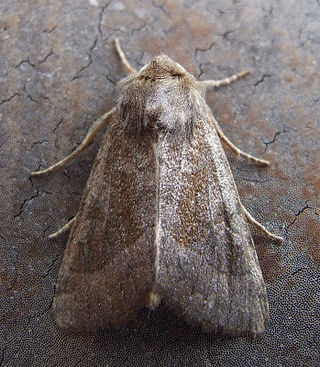
The butterbur is a species of moth in the family Noctuidae. It is found from most of Europe, east to Siberia and Japan.

Favonius taxila is a butterfly in the family Lycaenidae. It is found in the Russian Far East, north-eastern China, Korea and Japan.
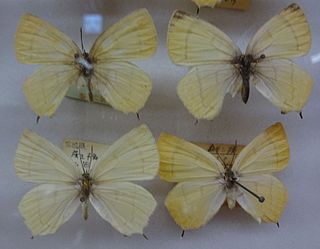
Shirozua jonasi, the orange hairstreak, is a butterfly of the subfamily Lycaeninae. It was described by Edward Wesley Janson in 1877. It is found in the Russian Far East, north-eastern China, Korea and Japan. It is widely distributed in the forest belt.

Boeberia is a genus of satyrine butterflies containing a single species Boeberia parmenio found in the Altai Mountains South Siberia, Mongolia, Yakutia, Amur and Northeast China.

Rapala arata is a small butterfly found in the East Palearctic that belongs to the lycaenids or blues family.

Japonica lutea is a small butterfly found in the East Palearctic that belongs to the lycaenids or blues family.
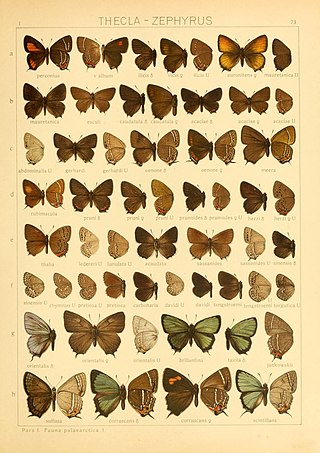
Chrysozephyrus brillantinus is a small butterfly found in the East Palearctic that belongs to the lycaenids or blues family.
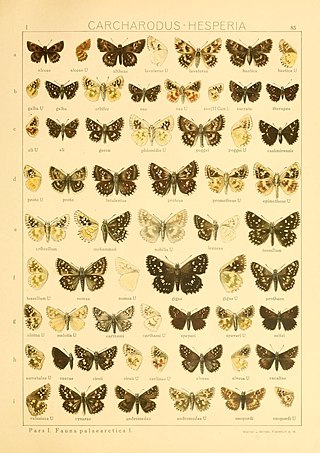
Pyrgus speyeri is a small butterfly found in the East Palearctic that belongs to the skippers family.
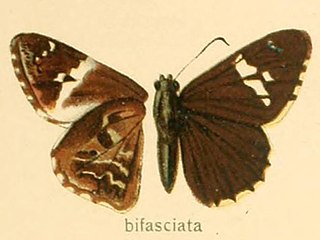
Lobocla bifasciatus is a small species of butterfly found in the eastern Palearctic that belongs to the skipper family Hesperiidae.
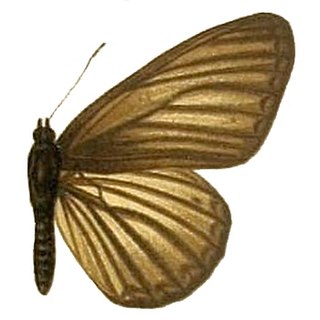
Aldania raddei is a butterfly found in the East Palearctic that belongs to the browns family.

Limenitis homeyeri is a butterfly found in the East Palearctic that belongs to the browns family.





















